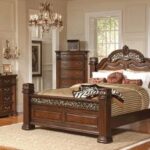The best artificial Christmas trees
The best artificial Christmas trees for 2020 – and where to buy them
 The best artificial Christmas trees
The best artificial Christmas trees
The best artificial Christmas trees
We Brits love the idea of a real Christmas tree – but not so many of us are keen on the realities of dragging a 7ft Norway Spruce through the house and leaving needles all over the place.
If you count yourself among the reluctant group, then it may be time to go fake. And, though you might balk at the idea of a plastic tree, the reality is that a quality faux fir is far from a faux pas.
After all, buying an artificial Christmas tree needn’t mean accepting defeat.
Why choose an artificial Christmas tree?
The big bonus is cost: artificial trees can last for decades, so they work out cheaper than paying for a real tree every year. Retailers are offering great deals at the moment: Balsam Hill has a sale on for example.
Aesthetic-wise, for the symmetrical obsessed among you, they look fabulous from all angles. And just think of the time you’ll save not having to hoover up pesky needles.
What are the downsides?
You might think you’re saving the planet, but a fake tree is actually not the most environmentally friendly of options. Most are made in factories in Asia, racking up some serious air miles to reach the UK. They’re made from non-biodegradable metal and plastic, and many end their lives in landfill.
On the other hand, of course, keep your tree for years and years and it will start to pay you back in terms of carbon footprint; whereas a ‘real’ one will always have to be transported, used and disposed of every year.
The other problem with a faux tree is that they can look synthetic – and of course you won’t get that lovely pine smell. You’ll also need to find space for storage.
What should I look out for?
Size: Generally speaking, they range from 4ft to 12ft. Most people opt for a 7ft tree, which fits in the average sized living room.
Price: 7ft trees come as low as £20, but you can spend over £8,000 if you want, too.
Spending as much as you can is worth it: a cheap tree will probably look cheap.
Tips: Go for a tree with a high tip count. This refers to the number of needles; the higher the count, the fuller the tree will look.
PVE or PE: Go for PE tips if you can afford them. They’re moulded to look like real needles and look realistic even up close. PVC ones are cheaper and are cut to look like needles – sometimes unsuccessfully.




